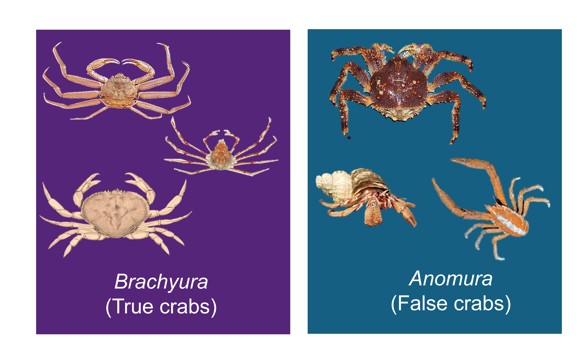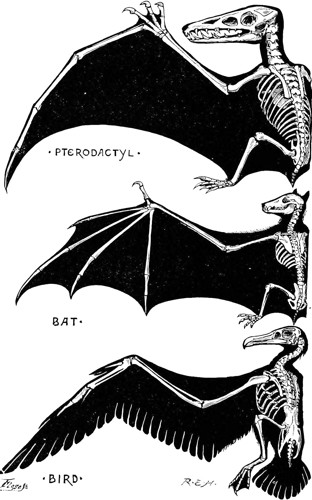
Is the crab the pinnacle of evolution?
May 10, 2025

- Related Topics:
- Animal biology,
- Evolution,
- Quirky questions,
- Common questions
A staff member at The Tech Interactive asks:
"I've heard that many different living creatures have evolved into one optimal body type—THE CRAB! Is it true that the crab is the pinnacle of evolution? Will everything far into the future have a shell, pinchers and multiple legs?"
This is a fun idea, but sadly, the short answer is no! The crab has a very effective design for what it does, and many more crustaceans might become crabs in the future, but the chances of all life becoming a crab in the future is very, very small.
Let’s Dive In (no pun intended)
In 1916, evolutionary biologist L.A. Borradaile noticed something strange. Lots of different crustaceans, despite not being directly related, all looked the same. In these crustaceans, spanning two different orders Anomura and Brachyura, many members sported wide, flat bodies, with tails folded underneath.
Brachyura are what we call “true” crabs. Common examples of true crabs include spider crabs and Dungeness crabs. Anomura are what we call “false” crabs. In other words, these crustaceans look like crabs, but they are not actually directly related to crabs through DNA! These false crabs include hermit crabs and king crabs.
Borradaile, fascinated by this pattern, came up with a word for his observation: carcinization.

What exactly is Carcinization?
Carcinization is a good example of what biologists call convergent evolution. This might sound fancy, but convergent evolution is the process by which features evolve independently in different organisms.
Let’s think about an example all of us might be more familiar with. In the history of all life on Earth, the ability to fly has arisen in four completely different animals: Insects, Birds, Bats, and Pterosaurs. All of these animals are distinct from one another (think about how different a dragonfly and bald eagle are), yet all of these animals share a big thing in common – they have wings!
In this case, we consider wings to have been convergently evolved, that is, despite their common ancestor not having wings, each family of animals developed wings all on their own to take to the skies.

Coming back to the crustaceans, it would appear the same thing has happened. Evolution has caused the crab body to evolve many times independently in different organisms!
So, why the crab body?
So, what makes the crab so special that nature has evolved it so many times? Is it so special that everyone will look like a crab in the future?
Well, the crab is indeed special, but only for crustaceans. Evolution is a dynamic process, and it responds to whatever pressures the organism is facing at the time. For crabs, there are lots of these pressures – they live on the bottom of the ocean, are small and at risk of being targeted by large predators, and they eat food that has shells.
When you think about these things, the benefits of being a crab seem more clear. A wide, flat body is able to hide under rocks, a hard shell prevents being eaten, and strong claws can be used both in self-defense and to break open tasty clams.

However, these pressures are not unique. Any crustacean living a lifestyle similar to a crab will experience them. With all the advantages that a crabby design has in addressing these pressures, it’s clear why evolution might shell out some of these features to other organisms to help them survive too.
The key thing to realize though, is that a lot of animals don’t live the same way crabs do. Humans, for example, live on land, don’t need to hide from predators, and don’t primarily eat clams. When it comes to what makes us adapted for our environment, things like a hard shell and flat body don’t particularly make sense. Evolution never happens without a reason, and for a lot of animals out there, looking like a crab won’t make living life any easier.

Author: Albert Qiang
Albert Qiang is a researcher in the Ting Lab engineering novel proximity labeling enzymes. Albert wrote this answer while participating in the Stanford at The Tech program.
 Skip Navigation
Skip Navigation
